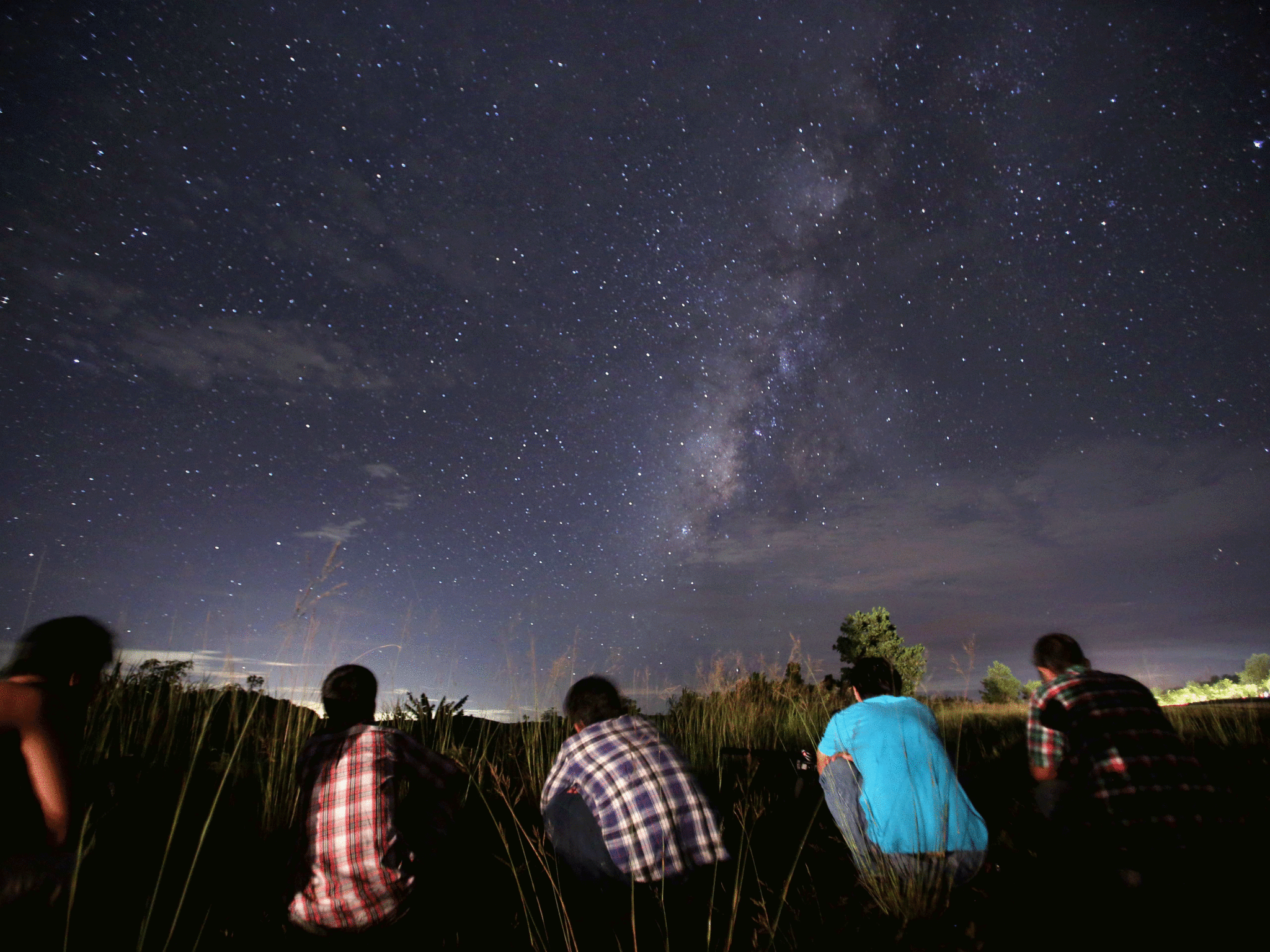Perseid meteor shower: Stunning phenomenon set to peak
The annual meteor shower will peak tonight and on Thursday evening

Stargazers are set to have a stunning view of hundreds of shooting stars this evening as the annual Perseid meteor shower reaches its peak.
Those in the Midlands and the North will have the best view of the meteors, with visibility in southern England and Scotland predicted to be low due to cloudy conditions.
The shower, known for being spectacular, will be extra special this year due to a fortunate alignment of the heavens. It will also coincide with a new moon, creating ideal dark sky conditions.
Occurring yearly between 17 July and 24 August, the meteors are due to reach their peak tonight and Thursday night when more than 100 meteors will be produced in one hour.
People hoping to catch a glimpse of the shower are advised to head to rural spots.
The International Space Station (ISS), which orbits the Earth every 90 minutes, will be visible for four minutes from 10.28pm tonight.
Perseid Meteor Shower 2014 in pictures
Show all 7“The thing about shooting stars is they're a wonderful free spectacle we can all enjoy, assuming clear skies,” Robin Scagell, vice president of the Society for Popular Astronomy, says.
“It’s best to watch them from the countryside but even in town, these meteors are bright enough for a few to be visible.
“The moon is out of the way which makes a lot of difference because the sky will be much darker all night.
“For every bright shooting star you see there are always fainter ones, and this will make it easier to see the fainter meteors and ring up the numbers.
“The Perseids are usually fairly bright. Also, they tend to leave a trail, or train, behind them.
“You can see the train hanging there glowing in the sky for a few seconds - sometimes for several minutes - after the meteor has gone.“
Mr Scagell urges people to keep a special eye out for the ISS.
“It will move from the west below the bright star Arcturus and then move towards the south, fading out as it passes into the Earth's shadow at 10.32pm,” he says.
“And it will be the brightest thing in the sky, apart from aircraft.
“It'll be in mid sky from southern England and quite low in the sky from northern Scotland but still visible.“
Special equipment such as binoculars or telescopes are not required to see the shower. They are visible to the naked eye and, due to their fast speed, can be hard to follow with specialist equipment.
Sitting outside and looking up is the best way to see them.
The showers tend to come in spurts so there may be nothing for a period, followed by a sudden flurry of meteor activity.
Additional reporting by PA
Subscribe to Independent Premium to bookmark this article
Want to bookmark your favourite articles and stories to read or reference later? Start your Independent Premium subscription today.

Join our commenting forum
Join thought-provoking conversations, follow other Independent readers and see their replies